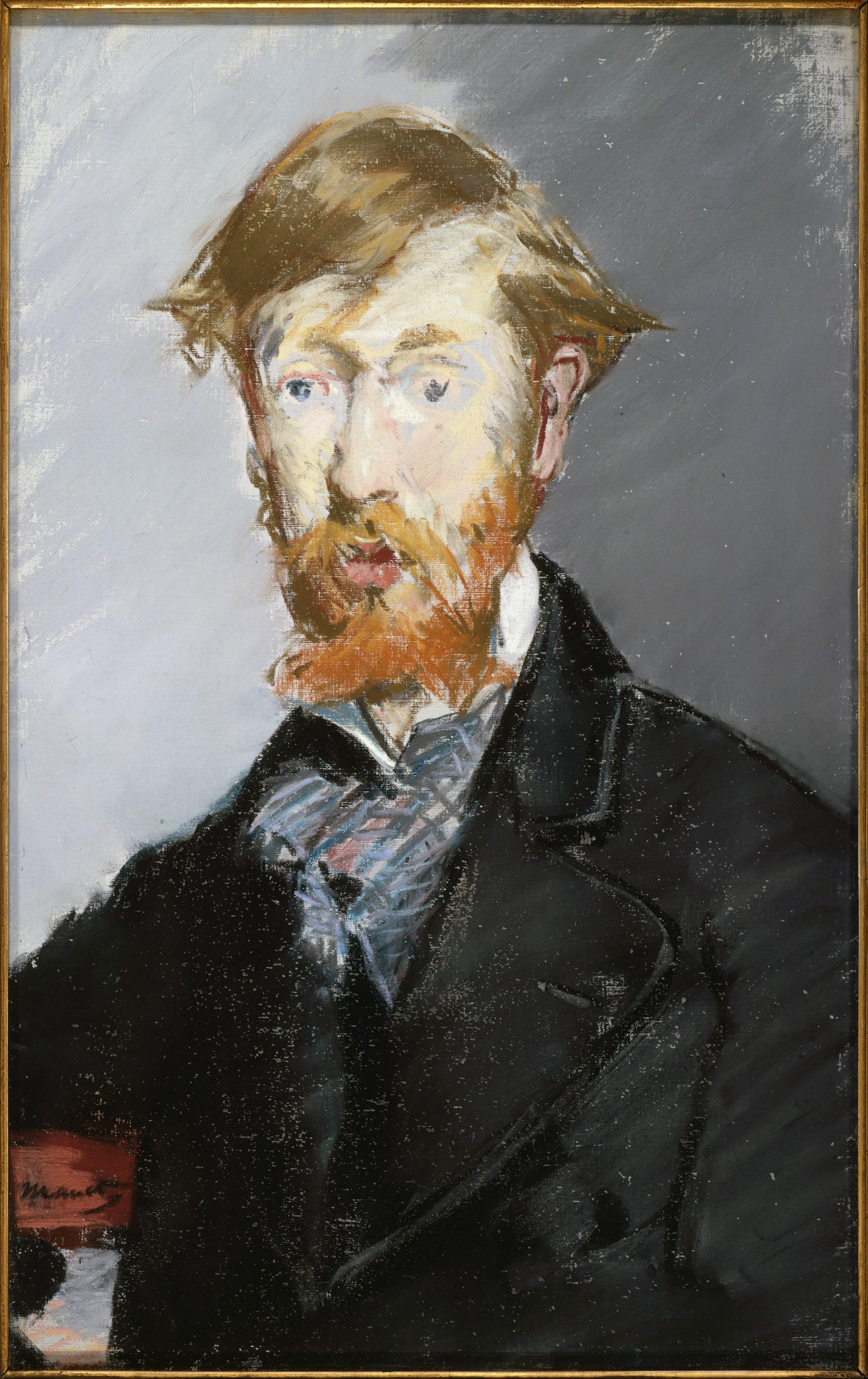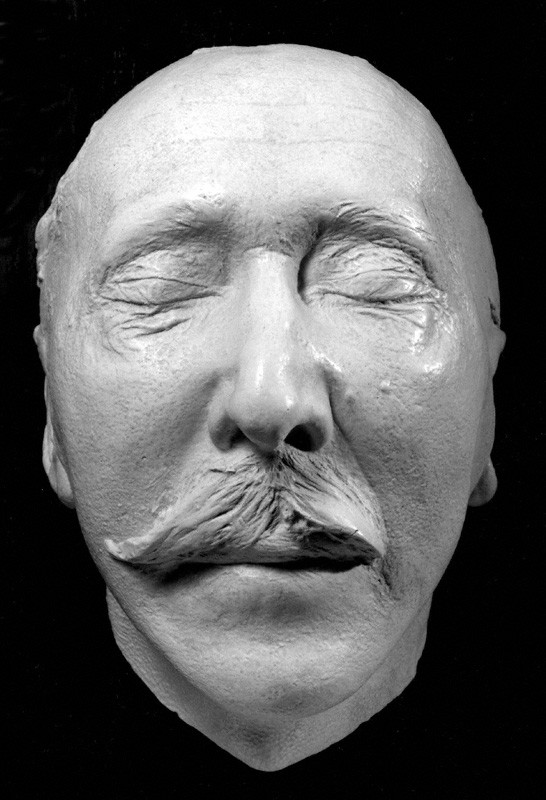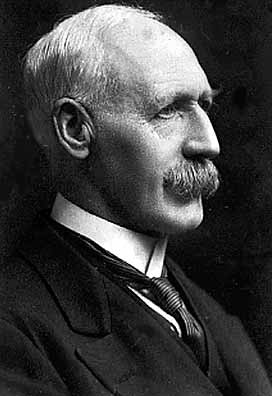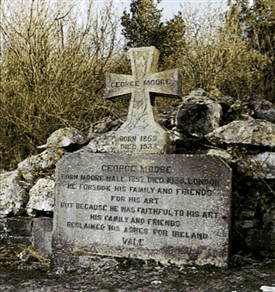Born at Moore Hall, his family's estate at Lough Carra, near Ballinrobe. In his early life he became friendly with the young Oscar Wilde who spent his summer holidays together with his family at nearby Moytura. Oscar was to later quip of Moore: "He conducts his education in public”. He attended St Mary's College, Oscott. He had wanted to be a painter, and studied art in Paris during the 1870s. He was an associate of many of the French Impressionist artists (Zola as a writer) and portraits of Moore by Manet, Degas, Sir. William Orphen (1878–1931), Tonks and Yeats hang in galleries all over the world. He was always the centre of any artistic and cultural excitement, and enjoyed a sixty-year literary career of prolific writing as an Irish novelist, short-story writer, poet, art critic, memoirist and dramatist with many publications to his credit. Among the many literary visitors to Moore Hall were Cummins, St. John Gogarty, Osborne Lady Gregory, Russel, Hone, Martyn, Hyde, Maria Edgeworth, and W.B. Yeats. His most important works include 'Ester Waters', 'Hail and Farewell', 'The Lake', 'Confessions of a Young Man' and 'An t-Úrghort'. He is as often regarded as the first great modern Irish novelist.
George Moore was involved with the setting up of the Abbey Theatre and The Gaelic league and is studied internationally as part of the Irish Literary Revival.
He died at his home at Ebury Street in the London district of Belgravia leaving a fortune of £70,000. He was cremated in London at a service attended by Ramsay MacDonald among others. George's ashes are interred in an urn, styled after a Bronze Age Greek of an original at the Nation Gallery, London. They are located on Castle Island (referred to locally as Moore's island) on Lough Carra, in view of Moore Hall and accessible by a five minute boat trip from the Moore Hall shore. A cairn of stones cover the urn with a Celtic Cross on a pediment.
Born at Moore Hall, his family's estate at Lough Carra, near Ballinrobe. In his early life he became friendly with the young Oscar Wilde who spent his summer holidays together with his family at nearby Moytura. Oscar was to later quip of Moore: "He conducts his education in public”. He attended St Mary's College, Oscott. He had wanted to be a painter, and studied art in Paris during the 1870s. He was an associate of many of the French Impressionist artists (Zola as a writer) and portraits of Moore by Manet, Degas, Sir. William Orphen (1878–1931), Tonks and Yeats hang in galleries all over the world. He was always the centre of any artistic and cultural excitement, and enjoyed a sixty-year literary career of prolific writing as an Irish novelist, short-story writer, poet, art critic, memoirist and dramatist with many publications to his credit. Among the many literary visitors to Moore Hall were Cummins, St. John Gogarty, Osborne Lady Gregory, Russel, Hone, Martyn, Hyde, Maria Edgeworth, and W.B. Yeats. His most important works include 'Ester Waters', 'Hail and Farewell', 'The Lake', 'Confessions of a Young Man' and 'An t-Úrghort'. He is as often regarded as the first great modern Irish novelist.
George Moore was involved with the setting up of the Abbey Theatre and The Gaelic league and is studied internationally as part of the Irish Literary Revival.
He died at his home at Ebury Street in the London district of Belgravia leaving a fortune of £70,000. He was cremated in London at a service attended by Ramsay MacDonald among others. George's ashes are interred in an urn, styled after a Bronze Age Greek of an original at the Nation Gallery, London. They are located on Castle Island (referred to locally as Moore's island) on Lough Carra, in view of Moore Hall and accessible by a five minute boat trip from the Moore Hall shore. A cairn of stones cover the urn with a Celtic Cross on a pediment.
Inscription
George Moore
Born Moore Hall 1852 died 1933 London
He deserted his family and friends
For his Art
But because he was faithful to his Art
His family and Friends
Reclaimed his ashes for Ireland.
Family Members
Sponsored by Ancestry
Advertisement
Advertisement








